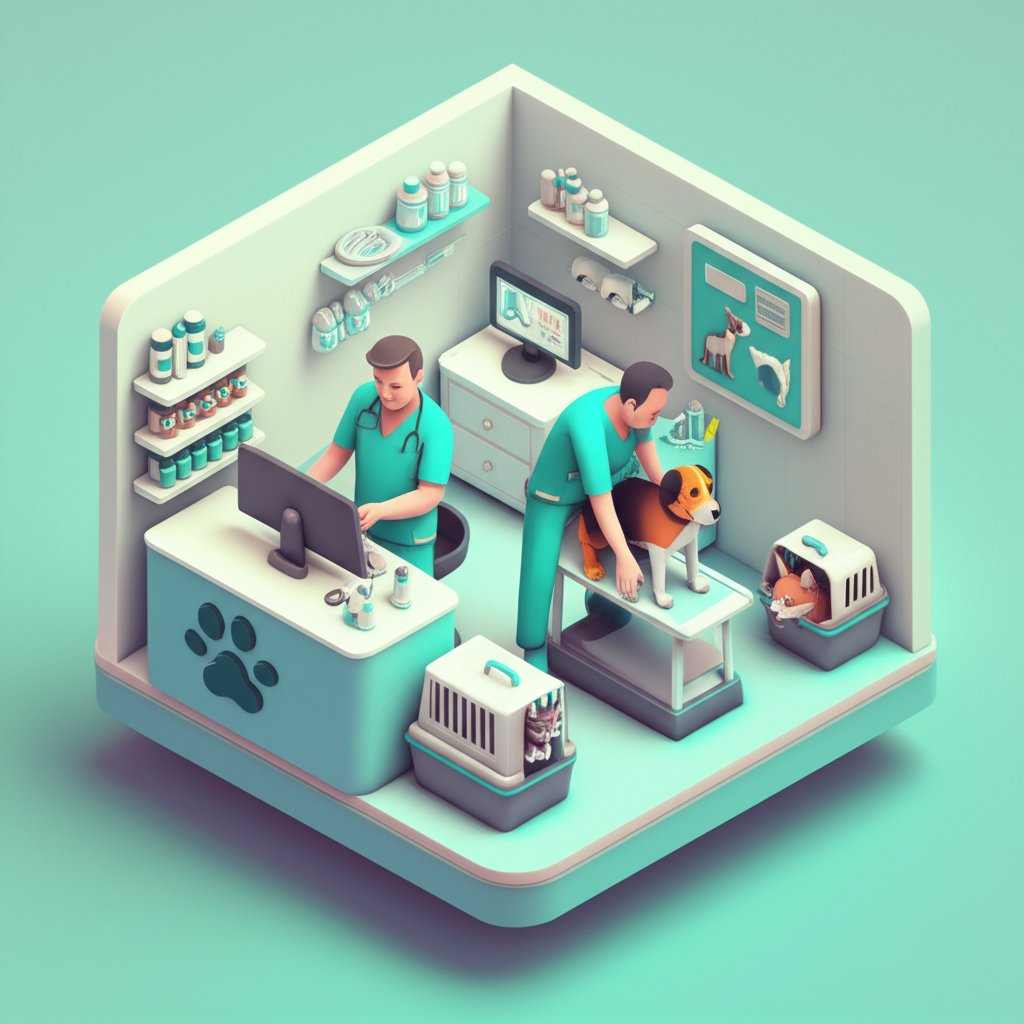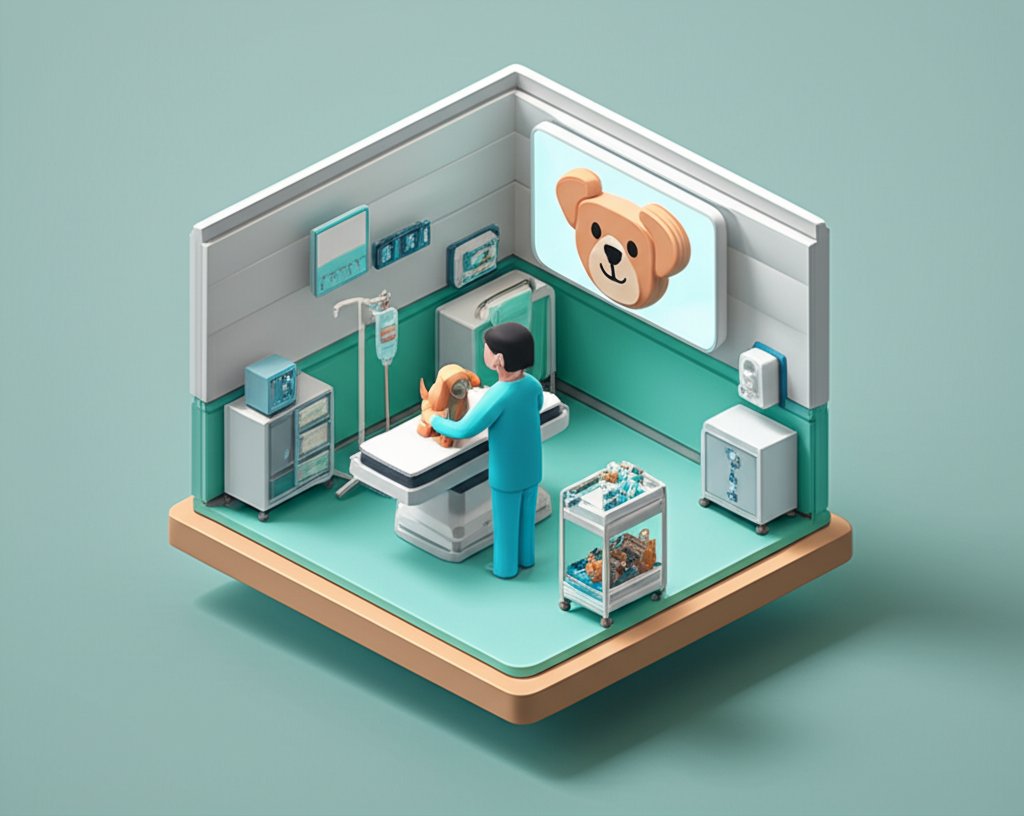Step beyond the clinic doors and into the heart of veterinary medicine, where science meets compassion and every day presents a unique challenge. Have you ever wondered what truly goes on behind the scenes, what drives a veterinarian to dedicate their life to the well-being of animals, or the deeply personal veterinary insights they gain? This article pulls back the curtain, offering an unparalleled look into the vet profession and the intricacies of modern animal care. Prepare to discover the untold stories, the triumphs, the heartaches, and the profound commitment that defines this noble calling, providing you with a newfound appreciation for those who heal our beloved companions.
The Daily Rhythm of a Veterinarian: Beyond the Exam Room
The life of a veterinarian is a dynamic tapestry woven with moments of intense focus, gentle compassion, and rapid problem-solving. It’s far removed from the simple image of cuddling puppies, though those moments certainly provide much-needed joy. The true essence of the vet profession lies in its demanding, multifaceted nature, where no two days are ever truly alike.
Understanding the dedication required in animal healthcare gives you just a glimpse into some veterinarian’s secrets and their commitment to our furry friends.
A Day in the Life: From Routine Check-ups to Critical Care
Imagine a typical morning: It might start with a preventive wellness exam for a energetic young Labrador, checking vaccinations, discussing nutrition, and offering advice on behavioral training – vital steps in proactive animal care. By midday, the scene could shift dramatically to an emergency surgery for a cat hit by a car, requiring immediate, precise action to save its life. This rapid transition from routine to critical highlights the incredible versatility and resilience required. Veterinarians must be general practitioners, surgeons, dentists, dermatologists, radiologists, and even behavioral therapists, often all within the same hour. They are the primary care physicians for an entire species, sometimes multiple species, and must master a vast spectrum of knowledge.
The Art of Diagnosis: More Than Just Symptoms
One of the deepest veterinary insights revolves around diagnosis. Unlike human doctors, animals cannot articulate their pain or symptoms. This means the veterinarian must become a detective, interpreting subtle cues: a slight limp, a change in appetite, a dullness in the eyes, or an unusual vocalization. They rely heavily on the owner’s observations, their own keen observational skills, a thorough physical examination, and advanced diagnostic tools. From interpreting complex blood work and urine samples to utilizing X-rays, ultrasounds, and even MRI scans, the diagnostic process in veterinary medicine requires a blend of scientific expertise and intuitive deduction. It’s a continuous puzzle, where each piece of information brings them closer to understanding and alleviating an animal’s suffering.
Surgical Precision: When Healing Requires a Skilled Hand
Surgery is a cornerstone of veterinary medicine, ranging from routine spays and neuters to highly complex orthopedic repairs, tumor excisions, and even specialized procedures like cataract removal. Mastering surgical techniques demands years of rigorous training, exceptional dexterity, and an unwavering commitment to patient safety. The veterinarian doesn’t just perform the surgery; they also manage anesthesia, monitor vital signs, and provide meticulous post-operative animal care to ensure a smooth recovery. Every incision, every stitch, is performed with the utmost care, knowing that a life depends on their skill and precision.
The Evolving Landscape of Veterinary Medicine: Technology & Specialization
The vet profession is far from static. It’s a field in constant evolution, driven by scientific breakthroughs, technological advancements, and a deeper understanding of animal physiology and behavior. Modern veterinary medicine looks vastly different than it did even a decade ago, offering more sophisticated options for animal care than ever before.
Cutting-Edge Tools: How Tech Transforms Animal Care
Technology has revolutionized diagnostics and treatment. Digital radiography provides clearer images with less radiation exposure. Advanced ultrasound allows non-invasive visualization of internal organs. Laser surgery offers greater precision and faster healing times. Telehealth is emerging, enabling remote consultations and follow-ups. Electronic medical records streamline patient information, ensuring continuity of care. These tools don’t just improve efficiency; they directly enhance the quality of animal care, allowing veterinarians to diagnose earlier, treat more effectively, and monitor progress with greater accuracy. They are crucial veterinary insights into improving outcomes.
A World of Specialists: Deeper Expertise for Complex Cases
Just like human medicine, veterinary medicine has embraced specialization. Today, a veterinarian can pursue advanced training and board certification in numerous fields: cardiology, oncology, dermatology, neurology, ophthalmology, dentistry, internal medicine, emergency and critical care, and even exotic animal medicine. This allows for unparalleled expertise in specific areas, offering pets with complex or rare conditions access to highly specialized animal care. When a general practitioner encounters a case beyond their scope, they collaborate with these specialists, ensuring the animal receives the most advanced and targeted treatment available. This collaborative network is a testament to the depth and breadth of the modern vet profession.
Holistic and Preventative Approaches: Beyond Traditional Treatment
Modern veterinary medicine is increasingly recognizing the value of a holistic approach to animal care. This extends beyond treating illness to promoting overall well-being. Preventative care, including tailored vaccination schedules, parasite control, and nutritional guidance, forms the bedrock of long and healthy lives for pets. Beyond conventional treatments, many veterinarians now integrate complementary therapies like acupuncture for pain management, herbal remedies for chronic conditions, and even specialized rehabilitation programs for post-surgical recovery or age-related mobility issues. These veterinary insights emphasize treating the whole animal, not just the disease, fostering a more balanced and comprehensive approach to health.
The Human-Animal Bond: Empathy, Communication, and Client Support

At its core, the vet profession is about nurturing the profound bond between humans and animals. While the focus is always on the patient, the veterinarian also plays a crucial role in supporting the human companions who love them. This demands exceptional empathy, clear communication, and an understanding of the emotional landscape surrounding animal care.
Bridging the Gap: Effective Communication with Pet Parents
A critical “secret” of successful veterinary medicine is masterful communication. Translating complex medical diagnoses and treatment plans into understandable language for pet owners is an art. A veterinarian must not only explain veterinary insights clearly but also actively listen to concerns, answer questions with patience, and respect the owner’s emotional and financial considerations. Building trust through transparent and compassionate dialogue ensures that owners feel empowered to make the best decisions for their pets’ animal care. This “holding hands” approach fosters a partnership between the veterinary team and the client, working together for the animal’s welfare.
Navigating Difficult Conversations: Compassion in Crisis
One of the most challenging aspects of the vet profession is guiding owners through difficult decisions, particularly those involving end-of-life care. A veterinarian often bears witness to profound grief, helping families understand when it’s time to say goodbye and offering support during those heartbreaking moments. The ability to provide compassionate counsel, explain complex prognoses with sensitivity, and honor the human-animal bond during times of loss is a testament to the emotional strength required in veterinary medicine. This isn’t just about clinical skill; it’s about profound humanity.
The Emotional Toll: Supporting Those Who Care
The emotional labor of the vet profession is immense. Veterinarians and their teams frequently encounter suffering, loss, and the intense emotions of pet owners. It’s not uncommon for a veterinarian to shed tears, not as a sign of weakness, but as an authentic expression of their deep compassion and dedication to animal care. Acknowledging and processing these emotions is crucial for mental well-being within the profession. Recognizing this emotional reality is a vital veterinary insight often overlooked by those outside the field, highlighting the importance of robust support systems for vet professionals.
Navigating the Challenges and Rewards of the Vet Profession
While deeply rewarding, the vet profession is not without its significant challenges. These range from the demanding nature of the work itself to the broader societal and economic pressures that impact veterinary medicine. Understanding these realities provides even deeper veterinary insights into what it means to be a modern veterinarian.
Systemic Pressures: From Long Hours to Ethical Dilemmas
Veterinarians often face long hours, on-call shifts, and the immense pressure of critical decisions. Economic factors can also present challenges, as the cost of advanced animal care can be prohibitive for some owners, leading to difficult ethical dilemmas for the veterinarian who wants to help every animal. Moreover, the profession grapples with high rates of burnout and mental health struggles, a “secret” that is increasingly being acknowledged and addressed. Despite these pressures, the unwavering commitment to animal welfare remains the driving force for most members of the vet profession.
The Power of Collaboration: Teamwork in Animal Health
No veterinarian works in isolation. The success of animal care hinges on a highly collaborative team: veterinary technicians, assistants, receptionists, and practice managers. Technicians, often referred to as veterinary nurses, are the eyes and ears of the clinic, possessing advanced skills in patient monitoring, laboratory procedures, and client education. A great team shares knowledge, supports each other, and understands that asking for help is a strength, not a weakness. This synergistic approach ensures the most comprehensive and effective veterinary medicine for every patient. This behind-the-scenes teamwork is a critical, often unseen, veterinary insight.
Continuous Learning: Staying Ahead in Veterinary Insights
The field of veterinary medicine is constantly evolving, with new research, techniques, and medications emerging regularly. A dedicated veterinarian commits to lifelong learning, attending conferences, reading scientific journals, and participating in continuing education courses. This dedication ensures they remain at the forefront of animal care, able to offer the latest and most effective treatments. This commitment to continuous improvement is a hallmark of excellence within the vet profession.
Advancing Animal Care: Education, Ethics, and the Future of Veterinary Insights

The future of veterinary medicine is bright, shaped by dedicated educators, rigorous ethical standards, and a passion for innovation. Understanding these foundational elements offers a glimpse into how animal care will continue to evolve and thrive.
Shaping Tomorrow’s Veterinarians: The Role of Education
The journey to becoming a veterinarian is arduous and demanding, requiring years of intensive study in veterinary medicine programs. These programs not only impart vast scientific knowledge and technical skills but also instill the ethical values, communication abilities, and empathetic practices essential for the vet profession. Modern veterinary education emphasizes hands-on experience, critical thinking, and a holistic approach to animal care, preparing graduates to meet the diverse challenges of the field. The quality of this education directly impacts the future of veterinary insights and practice.
Ethical Considerations: Balancing Welfare, Science, and Human Emotion
Ethical considerations are woven into every aspect of veterinary medicine. From decisions about humane treatment and pain management to the use of new technologies and the allocation of resources, veterinarians constantly navigate complex moral landscapes. They balance scientific evidence with animal welfare principles and the emotional needs of pet owners. The vet profession is guided by a strong ethical code, ensuring that the well-being of the animal remains paramount, even when faced with difficult choices. These ethical veterinary insights are core to the profession’s integrity.
The Future of Veterinary Medicine: Innovation on the Horizon
What lies ahead for veterinary medicine? We can anticipate even greater integration of artificial intelligence in diagnostics, personalized medicine based on genetic profiling, advanced regenerative therapies, and continued specialization. The expansion of public health initiatives led by veterinarians will also play a crucial role in safeguarding both animal and human health, through disease surveillance and zoonotic disease control. These exciting developments promise to push the boundaries of animal care, ensuring a future where our animal companions can live longer, healthier, and happier lives, fueled by continuous veterinary insights and advancements.
Conclusion
The world inside veterinary medicine is a complex, challenging, and profoundly rewarding one. It’s a field where science, compassion, and unwavering dedication converge to provide exceptional animal care. From the daily routines of a veterinarian diagnosing cryptic illnesses and performing life-saving surgeries, to the evolving landscape shaped by technology and specialization, the vet profession demands constant learning, emotional resilience, and a deep understanding of the human-animal bond. The veterinary insights shared here reveal a profession that is much more than a job; it is a calling that enriches lives, one animal at a time. It’s a true privilege to work in veterinary medicine, and understanding its depths fosters a greater appreciation for those who dedicate their lives to the health and happiness of our beloved pets.
FAQ
Q1: What exactly does “veterinary medicine” encompass?
A1: Veterinary medicine is the branch of medicine concerned with the health and welfare of animals. It encompasses the diagnosis, treatment, and prevention of disease in animals, as well as the promotion of animal health through research, public health initiatives, and animal care practices. It includes everything from routine check-ups and vaccinations to advanced surgeries and specialized treatments.
Q2: What are the key qualities needed to be a successful veterinarian?
A2: A successful veterinarian needs a strong scientific aptitude, excellent problem-solving skills, and surgical dexterity. Beyond technical skills, crucial qualities include profound empathy, strong communication abilities (especially with pet owners), emotional resilience to handle difficult situations, a commitment to continuous learning, and a collaborative spirit to work effectively within the vet profession team.
Q3: How has technology impacted animal care recently?
A3: Technology has profoundly transformed animal care. Advanced tools like digital radiography, ultrasound, MRI, laser surgery, and electronic medical records have significantly improved diagnostics, treatment precision, and overall patient management in veterinary medicine. Telehealth is also emerging, offering remote consultations and increasing accessibility to veterinary insights.
Q4: What are some of the biggest challenges faced by the vet profession today?
A4: The vet profession faces challenges such as long working hours, high educational debt, the emotional toll of dealing with animal suffering and owner grief, and ethical dilemmas related to the cost of care. There’s also a growing recognition of mental health struggles and burnout within the field, leading to increased focus on professional well-being and support systems.
Q5: What are “veterinary insights” and why are they important?
A5: Veterinary insights refer to the knowledge, understanding, and perspectives gained through extensive experience and study within veterinary medicine. They are important because they provide a deeper understanding of animal health, behavior, the dynamics of the vet profession, and how best to deliver effective animal care. These insights help drive innovation, improve practices, and enhance the overall well-being of animals.
Q6: Is there a future for specialized roles within the vet profession?
A6: Absolutely. The vet profession is increasingly embracing specialization, similar to human medicine. Veterinarians can pursue advanced training in fields like cardiology, oncology, neurology, dermatology, emergency and critical care, and more. This trend ensures that pets with complex conditions can receive highly focused and advanced animal care from experts in specific areas of veterinary medicine.










